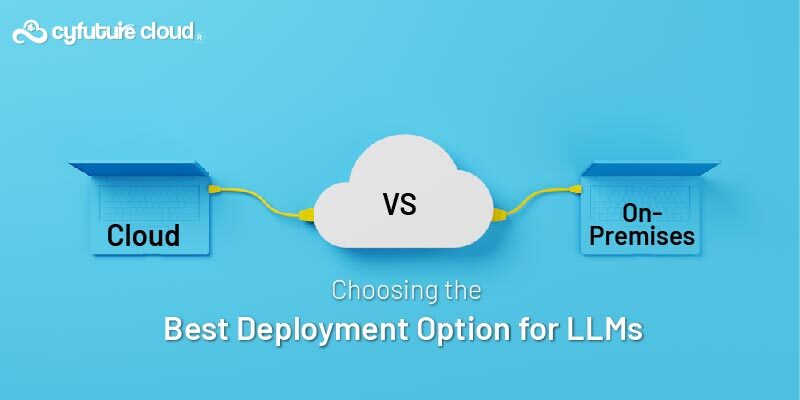Table of Contents
- The Future of Serverless Computing: A Vision of What’s to Come
- Debunking the Myth of Serverless: It’s More Than Just ‘No Servers
- What is Serverless Computing?
- How does Serverless Computing works?
- What are the advantages of Serverless Computing?
- Impact of Serverless on our lives in future
- Common Uses of Serverless Platforms
- The Future Of Serverless Computing
- To Sum Up!
In recent years, the concept of serverless computing has been gaining a lot of attention, and it’s easy to see why.
By allowing developers to build and run applications and services without the need to manage infrastructure, serverless computing has the potential to revolutionize the way we think about building and deploying software.
The market of Serverless Computing is expected to grow at a healthy rate of 23.17% during the forecast period from 2021 to 2026.
In this blog post, we’ll delve into the future of serverless computing and explore its potential impact on the industry.
The Future of Serverless Computing: A Vision of What’s to Come
For initiation, it’s important to learn about what is the meaning of “serverless computing.”
At its core, serverless computing is a model for creating and running applications and services in which the underlying infrastructure is abstracted away.
Instead of having to manage servers and other resources, developers can simply write code and let the cloud provider worry about the underlying infrastructure.
Debunking the Myth of Serverless: It’s More Than Just ‘No Servers
While the name might imply otherwise, serverless computing most definitely still involves servers. ‘Serverless’ is simply a term used to describe the developers experience with those servers – they are invisible to the developer and they don’t interact with them in any way.
Today, all of the major cloud service providers offer a serverless platform, including Amazon Web Services Microsoft Azure (Azure Functions), (AWS Lambda), Google Cloud (Google Cloud Functions), and IBM Cloud (IBM Cloud Code Engine). Serverless computing, microservices, and containers are all technologies that are typically considered essential for developing cloud-native applications.
What is Serverless Computing?
Serverless computing is a execution model and application development of cloud computing in which the cloud provider dynamically allocates resources to run application code and scale applications.
In a serverless model, the cloud provider charges for the actual execution of code, rather than for pre-allocated instances of virtual machines (VMs) or containers.
With serverless computing, developers purchase back-end services from cloud services vendors on a pay-as-you-go basis, which means they pay only for the services used. This can result in cost savings, as you only pay for the resources you use, and can scale resources up or down as needed.
Typically, serverless architectures are built around stateless functions-as-a-service (FaaS) platforms, such as Azure Functions, AWS Lambda, or Google Cloud Functions.
These platforms allow developers to run and scale applications and services without the need to provision or maintain infrastructure. Developers can write and deploy their code, and the FaaS platform will automatically execute the code and scale it as needed.
Serverless computing is a relatively new concept and is still evolving, but it has the potential to greatly simplify the development and deployment of cloud-based applications and services.
How does Serverless Computing works?
In serverless computing, you write and deploy your code without worrying about anyother infrastructure-related things like the allocation of resources and applications. When your code is needed, the serverless platform runs it in a managed environment, known as a “function.”
Have a glimpse of the high-level of how serverless computing works:
- Write code: For your application or service you can write the code, and bundled it into a deployable unit which is known as a function.
- Upload function: After that, you upload your function to a serverless platform, such as Google Cloud Functions, AWS Lambda or Azure Functions.
- Specify triggers: You specify the triggers that will invoke your function, such as an HTTP request or a message being published to a message queue.
- The function is invoked: Once a trigger occurs, the serverless platform runs your function in a controlled & regulated environment.
- Execution of function: Your function executes and performs the desired logic.
- Pay for compute time: The serverless platform charges you only for the compute time that your function consumes, typically in increments of 100 milliseconds.
What are the advantages of Serverless Computing?
The use of cloud computing is surging globally, as more companies of all sizes find the benefits of the technology. Cloud computing can help companies save money on hardware and software, while also providing flexibility and scalability.
Let’s dive deeper, to understand the various benefits of using serverless computing architecture:
1. Cost savings
With serverless computing, you only pay for the compute time that you consume. This means that you don’t have to worry about idle capacity or upfront costs for hardware and infrastructure.
2. Scalability
Serverless platforms automatically scale to meet the demand of your application, which can save you the time and effort of capacity planning.
3. Flexibility
Serverless platforms allow you to build and deploy applications and services quickly, without the need to provision and manage servers. This can make it easier to experiment and iterate on your ideas.
4. Improved reliability
Serverless platforms are designed to be highly available and to automatically recover from failures. This can help improve the overall reliability of your application.
5. Focus on code
With serverless computing, you can focus on writing code, rather than worrying about infrastructure. This can help you develop your application more quickly.
6. Event-driven computing
Serverless platforms are often designed to be triggered by events, such as an HTTP request or a message being published to a queue. This allows you to build applications that are responsive to real-time events.
7. Improved security
Serverless platforms typically offer built-in security measures, such as network isolation and automatic patches, to help protect your application and data.
Better collaboration: Serverless platforms often include tools for collaboration and version control, which can make it easier for teams to work together and manage changes to their code.
Impact of Serverless on our lives in future
Because of several benefits, serverless technology is becoming more and more popular. However, it’s important to consider how it will affect the future and the potential changes it may bring.
Here are a few ways serverless computing capabilities could potentially impact the future:
- There could be a shift in the way we think about scalability.
- We may need to change the way we manage our data.
- Security could become an even greater concern.
Increased efficiency
Serverless computing can help organizations and individuals build and deploy applications and services more quickly and efficiently, potentially leading to faster development cycles and more innovative solutions.
Lower costs
Because you only pay for the compute time you consume with serverless computing, it can potentially lead to lower costs for individuals and organizations using it.
More focus on business logic
With serverless computing, you can focus on writing code and building business logic, rather than worrying about infrastructure. This could lead to a shift in the types of skills that are in demand and the types of jobs that are available.
Greater agility
The flexibility and scalability of serverless computing can help organizations respond more quickly to changing business needs and take advantage of new opportunities.
Improved security
Serverless platforms typically offer built-in security measures, which could lead to a more secure computing environment overall.
Increased collaboration
Serverless platforms often include tools for collaboration and version control, which could make it easier for teams to work together and manage changes to their code.
Common Uses of Serverless Platforms
Serverless platforms allow you to build and run applications and services without the need to provision, scale, and maintain infrastructure. This can help you save time and money, and allows you to focus on building and deploying your applications rather than managing infrastructure.
Serverless platforms are commonly used for a variety of workloads, including:
- Running microservices and Application Programming Interface (API) Back-Ends.
- Building and deploying serverless applications
- Microservices support
- Breakthrough automation workflows and processes
- Running batch jobs and ETL processes
- Providing event-driven computing for real-time applications
The Future Of Serverless Computing
It is difficult to predict exactly what the future of serverless computing will look like, but it is likely to continue to grow in popularity and importance. Some potential developments in the future of serverless computing include:
Wider adoption
As more organizations and individuals become aware of the benefits of serverless computing, it is likely to see wider adoption.
Smooth integration with other technologies
Serverless computing is likely to become more integrated with other technologies, such as artificial intelligence and the Internet of Things, as these technologies become more prevalent.
Enhanced security
As serverless computing becomes more widely adopted, it is likely that platforms will continue to improve their security measures to protect against potential threats.
Enhancing the developer experience
Serverless platforms are likely to continue to evolve and improve their developer experience, making it easier for developers to build and deploy applications and services.
Considerable focus on open-source technologies
It is possible that the serverless ecosystem will continue to shift towards open-source technologies, allowing for greater flexibility and innovation.
To Sum Up!
Business and technology executives are finding that in order to compete effectively in this rapidly changing business environment, they need to take advantage of cloud computing.
This can be done through the tools and systems they choose, the institutions they create, or the business strategies they emphasize. Businesses that set the stage for success in the future by fusing the power of innovative IT with their distinctive resources (such as customer relationships, excellent service capabilities, strong partnerships, market insights, or technology investment) will be the ones that succeed.
Serverless computing is a game-changer for developers, as it significantly reduces operational responsibilities when it comes to monitoring and expanding large-scale systems. The serverless model is resource scheduling-driven, which enables load balancing for applications. Virtualization technology powers the backend and ensures stable performance.
Industry, the scientific community, and open-source organizations have made great progress in delivering critical programming concepts and tools despite many ongoing hurdles. Some benefits of serverless computing include faster development, serverless deployment, lower running costs, and easier administration.
Send this to a friend

 Server Colocation
Server Colocation CDN Network
CDN Network Linux Cloud Hosting
Linux Cloud Hosting Kubernetes
Kubernetes Pricing Calculator
Pricing Calculator
 Power
Power
 Utilities
Utilities VMware Private Cloud
VMware Private Cloud VMware on AWS
VMware on AWS VMware on Azure
VMware on Azure Service Level Agreement
Service Level Agreement 



















